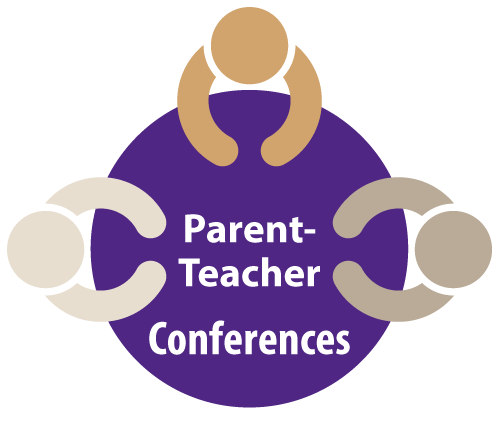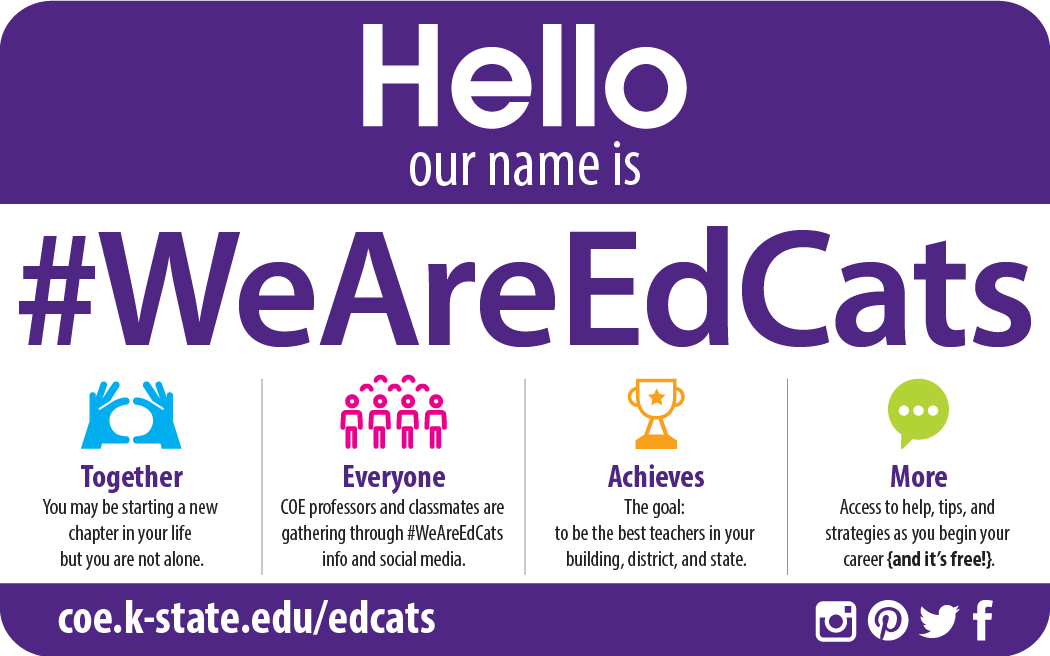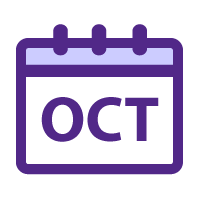Lori Goodson, Editor
Mary Hammel, Technical Editor
Category: September 2018
In the Classroom: Misty Vognsen
School district: Wayside Schools Charter Network
City/State: Austin, TX
Class/content area taught: 6 sections of English I (9th grade)
What you are most excited about with your new career: My school just moved into a brand new building because they were out growing their old one, so I am in a classroom that no one has ever been in before which is super exciting!
The other thing that I am really excited about is helping ELL students achieve their language goals. About 70% of my school population is Hispanic, and many of them are ELL students who have potentially only been in the country for a year or two. Helping these students get something out of their English class is a blast!
What you enjoy most about teaching: The kids! My school is on a modified year-round schedule which means we only have six weeks of summer and then get two weeks off every nine weeks. This means that we go back to school a lot earlier than most schools, so I just finished my third week! Freshman are just so goofy and fun to be around, and I have loved getting to know them.
I also really love showing kids that reading and writing can be fun! A lot of kids come into English with the idea that they already hate it, and I love making literature and literacy more accessible to them.
Ways your school/district has supported you: Everyone here has been wonderful! Specifically, my district had a full week of professional development before we went back to school, with the goal of integrating the new teachers and introducing us to “The Wayside Way” – common rules and procedures, etc. I also have administrators and a department head that are always right there to help and encourage.

Specific things you believe KSU especially helped prepare you for your new career: One thing I have heard over and over is that people at Wayside are so surprised that I have as much classroom experience as I do. There are other educators who have started at Wayside with no classroom experience at all (including student teaching!) so I feel very prepared and thankful for all of the classroom experience that I got in my time in the College of Ed. I have never felt uncomfortable or nervous in my own classroom, and it is mainly because I have so many hours of field experience under my belt.
Specifics about your background that make teaching the perfect fit for you: I have never wanted to be anything else. I have wanted to teach since before I entered kindergarten, and I put my younger siblings through countless hours of playing school when we were younger. I also have a wonderful family, who places an extremely high value on education itself. My mom and grandma have always instilled in me that education is the only way to help yourself grow, no matter what situation you come from in life.

Suggestions/encouragement for new teachers: Get as much information as you can about your school when you get hired. For me, this was reading through not only the teacher handbook but the student handbook, reading through curriculum materials, and talking to other teachers. The more you know about the school and its culture, the more comfortable you will feel going in.
Don’t be afraid to start planning, even if you don’t know for sure what you will be teaching. I didn’t know which grade level I would be working with until a week before school started as there were multiple English positions open in the district. Plans can always be scaffolded up or down, or adapted for different grade levels. Don’t be afraid of planning early! It is much easier to adapt lessons than start from scratch.

Don’t treat college like a joke! You are stressed, tired, and you have so much going in and out of your brain. Think of this as a constant state of professional development. You are an educator, and your first year you will probably be a stressed and tired most of the time.
The more that you practice having a positive outlook and attitude now, the better prepared you will be when your first school year as a licenced educator starts and you begin to feel a little bit overwhelmed.
Great links to great ideas!
The COE’s Department of Curriculum and Instruction is looking out for you! Here are some links our colleagues believe provide some useful ideas as you get settled into your new profession:
Beating the Stress of the Classroom
Special thanks to Mrs. Lou Ann Getz for providing several of these links!
You’ve an amazing career choice–pass it on!
Being prepared: Just in case
 In your first few weeks of teaching, you’ve probably not even thought of the possibility that you might miss a day of teaching. However, the time will come—due to your being sick or an illness in the family, an emergency, or even a professional development opportunity supported by your school—that you will be absent from your classroom for a day or more.
In your first few weeks of teaching, you’ve probably not even thought of the possibility that you might miss a day of teaching. However, the time will come—due to your being sick or an illness in the family, an emergency, or even a professional development opportunity supported by your school—that you will be absent from your classroom for a day or more.
It’s better to be prepared for it, rather than wait for that opportunity to present itself—possibly as stomach flu at 4 in the morning.
Some schools have folders that their teachers use for substitute plans, or possibly a sheet that includes the basic information of your teaching duties. But you’ll want to be a little more prepared than that, so you’ll probably want to set up your own Substitute Plans folder and keep in your desk in a specific place.
Consider adding the following to your personal “sub” folder:
- Your daily schedule (including times, lunch and plan periods, etc.)
- Lists (and directions) of any other rooms where your substitute would need to be.
- General school daily schedule (hours/blocks/etc.).
- General school lunch schedule.
- Emergency drill plans (map, directions, etc.)
- A list of key contacts and their telephone extension numbers.
- Easy access to class rosters (with notes of any special needs or concerns for specific students).
- Seating charts, if applicable.
- A brief sentence summarizing the purpose of the class.
- A list of information about each class—approximate number of students, any paraprofessionals or other educators who assist with the class.
- For classes with older students, a list of responsible, go-to students they can count on for help.
- Your phone number or email if they should need to contact you.
- Blank notebook pages—so they can easily leave you notes about the classes and any concerns or updates that they’d like to share.
- A list of where they can find key materials.
- Some untimely—but educationally appropriate—assignments that the substitute can use to fill time, as needed.
By having this general information already prepared, when the time comes for you to be absent, you’ll only need to write the specific activities for that day.
For those daily activities, if your absence is unplanned due to an illness or emergency, email the specific directions to the office assistant and to another teacher, as a backup. Be sure to point out the location of your substitute folder. Otherwise, have a copy printed out ahead of time and left on your desk.
The easier you can make it for the substitute, the easier your return will be…and the less worrying you’ll do during your absence. Trust me, the stomach flu…or the PD opportunity…will demand ALL of your attention!
The Power of Procedures
You’ve heard it before, but after a month of teaching, you might want a quick reminder. Here are a few ideas on why procedures can help you have a more effective classroom so you can get to the task of teaching, rather than disciplining. There’s plenty on the Internet about this, but here are a couple of favorites that make some key points for whatever grade level you’re teaching:
Get Ready to Meet the Parents
 Even the most veteran of teachers can find Parent/Teacher conferences a little uncomfortable, but being prepared will help you make the most of this important opportunity. So let’s get prepared by considering the following:
Even the most veteran of teachers can find Parent/Teacher conferences a little uncomfortable, but being prepared will help you make the most of this important opportunity. So let’s get prepared by considering the following:
BEFORE THE CONFERENCES
- Have meaningful grades in your grade book so you can talk about the child’s progress.
- Take time to get to know each student so you can demonstrate at the conference that you’ve made a personal connection with the student.
- Learn as much as possible about the process for parent/teacher conferences. Some schools require that the student take an active part in the discussion, so make sure your students are prepared, as well.
- Compile (or have your students compile) folders of their work to share with their parents/guardians. Include writings, assignments, assessments, and artwork to showcase their learning so far this year. You may want to add other items, such as grades, assessment results, and other items to share, as well.
- Find out what materials and information teachers traditionally share at the conferences, since it can vary greatly from school to school and district to district.
- Know the details of the conferences—when, where, guides on how much time to spend with each student’s parent/guardian, when to suggest an individual meeting to have more extensive discussions, etc.
- Prepare a flier with important upcoming dates, a list of needed classroom items if they would like to contribute, and a brief look at upcoming important dates to help them be involved in their student’s education.
AT THE CONFERENCES
- Step No. 1: Smile and introduce yourself. Be the first to offer a handshake.
- Realize that the parents/guardians are taking time from their busy schedule to visit with the child’s teachers. Since we encourage family involvement in their child’s education, we need to appreciate their efforts. Be sure to thank them for attending.
- Make comments about concerns and accomplishments specific to that student.
- Provide specific ideas on areas where you’d like to see the student improve; provide specific suggestions on how the parent/guardian can help make that happen.
- Be prepared to answer if a parent or guardian asks when he or she can do to help. That’s a golden opportunity you don’t want to overlook. Many times parents want to help, but they’re unsure just how to do that.
- Make sure they know you value their input; provide additional contact information, and encourage them to contact you with any concerns or ideas.
- Keep track of which students have individuals attending the conference on their behalf. Many schools provide a sign-in sheet; if not, consider creating a roster so you’re aware of who attended and who didn’t.
- Review the list and consider making a personal effort to get parents/guardians of students you’re especially concerned about to set up an individual appointment with you.
- Following the conferences, briefly thank your students for having their parents/guardians attend the conferences. However, don’t overdo this; in many cases, the students can’t help it if the adults in their lives decline the opportunity to attend the conferences.
Join #WeAreEdCats today!
 Have you checked this out yet?
Have you checked this out yet?
We want to help beginning and early career teachers like you thrive in your career! Check out #WeAreEdCats for teaching tips and to stay in touch with the COE! Check out the website at coe.k-state.edu/edcats.
Your COE family wants to hear from you
![]() We are waiting for an update from you!
We are waiting for an update from you!
Why don’t you send us a photo of you at work in your classroom! Or, do you have a question about classroom procedures? A suggestion for a topic we should address in Before the Bell? Want to add your name to our mailing list? Or provide a different email for our list? At the very least, just email and say hi!
Early-career teachers, feel free to jump in and offer suggestions to those who are following your career choice!
We’d love to hear from you, so please email us at lagoodson@k-state.edu.
Go, COE Cats!


